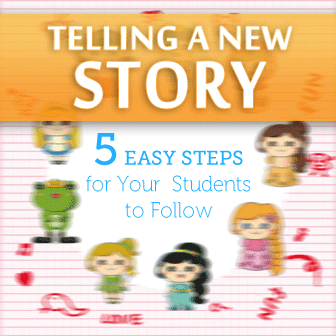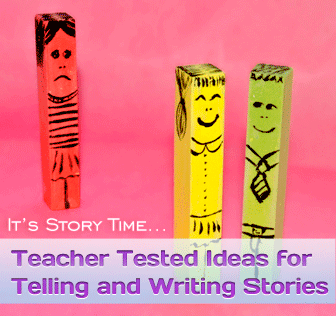Telling a New Story: 5 Easy Steps for Your Students to Follow


By looking at some good stories and then teaching your students what elements compose these stories, you and your class can have fun while becoming better storytellers.
Character
To start your story unit, read to your class some stories that you have already read as a class. Ask your students what they like about the stories. Is there anything they would like to change about them? How do they feel about the main characters?
Character building is one of the most important pieces of a story. A successful author knows that an outlandish story can be successful if it centers around believable characters. To help your students develop these types of characters for their stories, start with a brainstorming activity. Have each student make a list of at least ten personality characteristics that he admires. This list might include intelligence, honesty or bravery. Then have each student make a list of at least five personality characteristics that he dislikes. This list may include untruthful, selfish or jealous. Now have your students select two characteristics from the first list and one from the second list and imagine a character who fits this description. Then give your students some hypothetical scenarios and ask them how their character would respond. These scenarios might be seeing a house on fire, failing a test, or getting incorrect change at a store – first less than he should have and then more than he should. Ask your students to try to imagine how their character would react in each scenario. Then have each person choose one scenario and write out his or her character’s reaction in simple story form.
Plot
Some plots are outlandish, others are ridiculous, but no matter how unusual the plot of a story it will follow one of four basic models. Ask your students what they think of when they hear the word plot (or define it if they are unfamiliar with the term). If your students suggest specific examples, point out that any plot can be categorized into one of four basic conflicts.
The first of the four conflicts is man versus man. In this basic conflict, one individual is opposed to another individual. Star Wars is an example of this type of plot where Luke Skywalker is pitted against Darth Vader.
The second basic type of conflict is man versus society. In this plot, one individual is engaged to change the world around him. A historical example of this type of conflict is the life of Dr. Martin Luther King who tried to change the way the U.S. treated those of African American descent.
The third basic type of conflict is man versus himself. In this type of conflict, an individual has an internal conflict that he must overcome, often facing his fears. An example of this type of plot is A Beautiful Mind.
Finally, the fourth basic type of conflict is man versus environment. The classic example of this type of conflict is Jack London’s “To Build a Fire” in which the main character must somehow generate a fire to keep himself alive in the frigid weather.
Challenge your students to think of other examples that could fulfill each of these breakdowns. Then have each person reread a story he has already drafted and try to determine which type of conflict his piece uses.
Story illustrators look at the basics of a plot when they are illustrating a story. They cannot put every detail of the story into the illustrations, so the artist must decide on the main points of the plot. Have each of your students exchange a story he has written with a partner in the class. Then challenge each student to illustrate the story his classmate has written. To do so, he must decide on the major points of plot. Suggest each person limit his illustrations to between four and six, and then display the homemade picture books on a bulletin board for your class to read at leisure!
Setting and Resolution
Setting may be the easiest piece of story for your students to understand. A story can happen anywhere. Spend a few minutes as a class brainstorming a list of different possible settings for a story they might write. The setting could be a city, a building, or a person’s home. There are limitless possibilities for strong settings in a story.
For a quick activity using a predetermined setting, have your students imagine a story set in a backyard. Ask each person to make a quick list of different animals who might play the main character in that story. Their characters might include dogs, cats, birds, raccoons, deer, insects or snakes. Then have each person think of a problem (conflict) that each character might have. The dog may be lost. The insect may need something to eat. The bird may have a broken wing. Challenge your students to write as many combinations of character and conflict as possible in a one-minute period. Then explain to your class that the resolution is how the problem is solved. Giving your class more time, ask each person to write down the solution to each of his character/problem scenarios he did in the previous activity. Then have each student choose one and write an original story using the plot outline he has constructed.
So pull up some carpet, sit in a circle and get ready for some original tales from your class as you explore the idea of story!